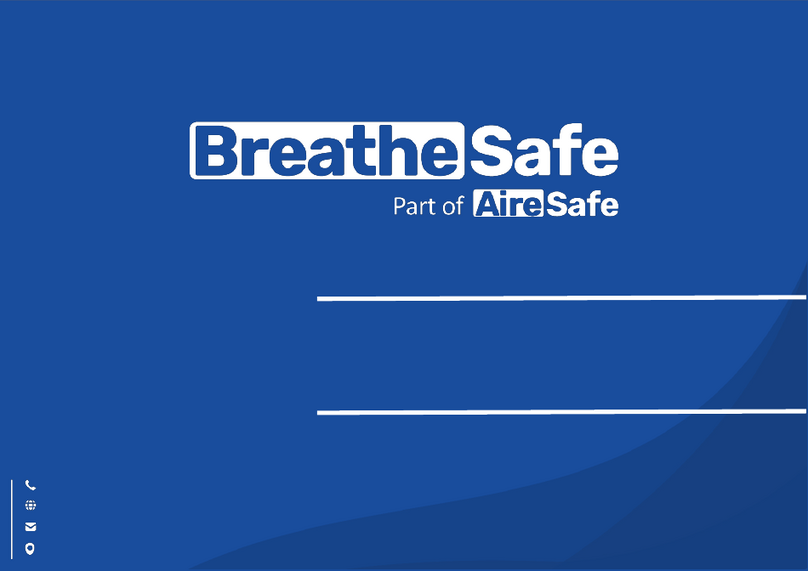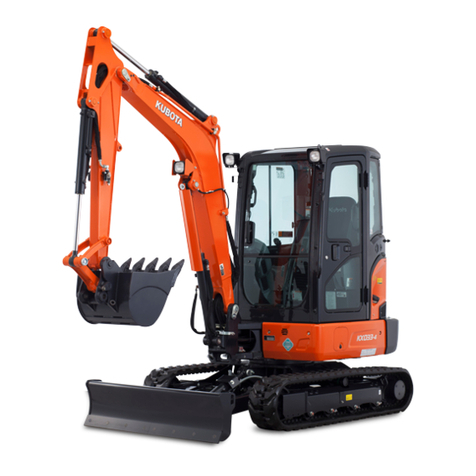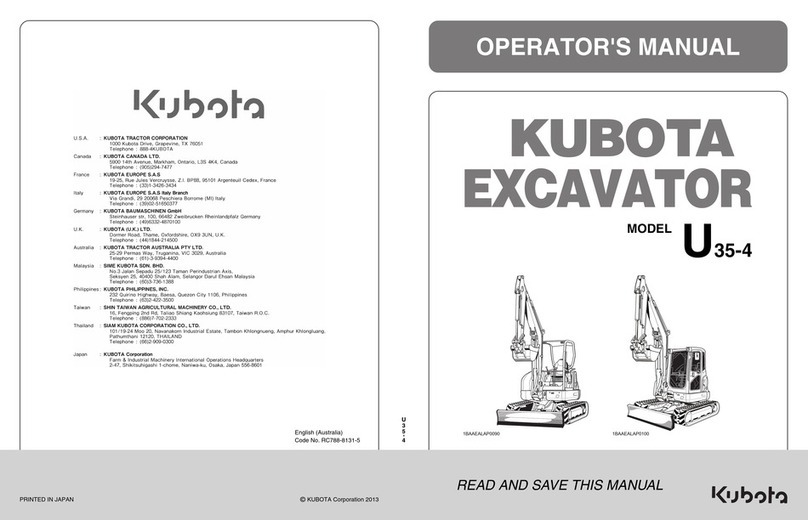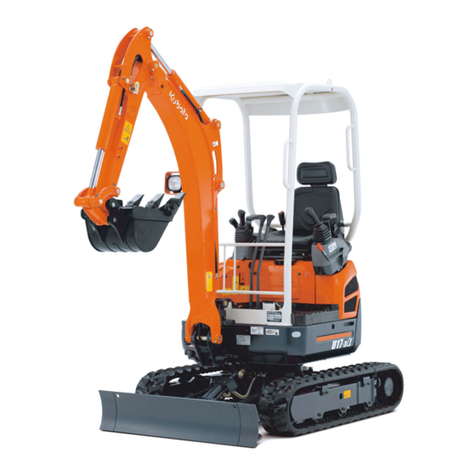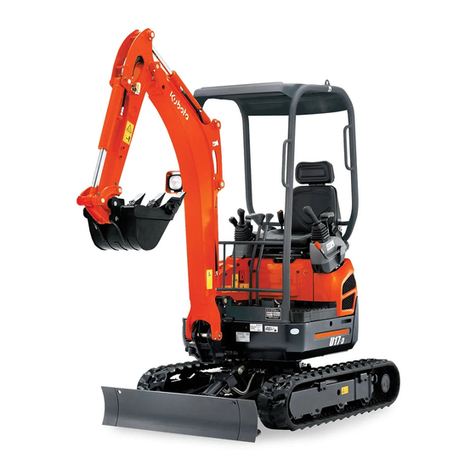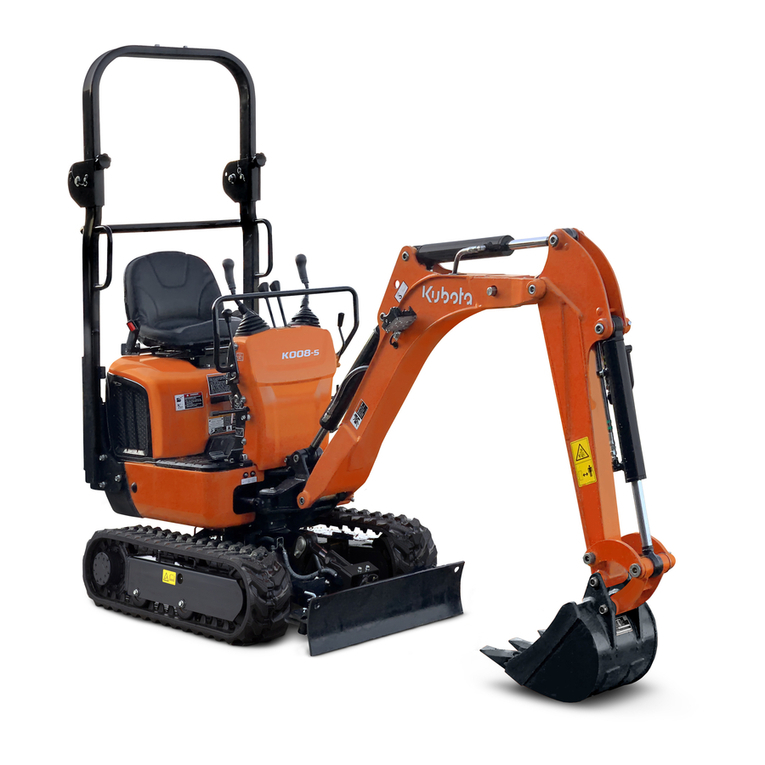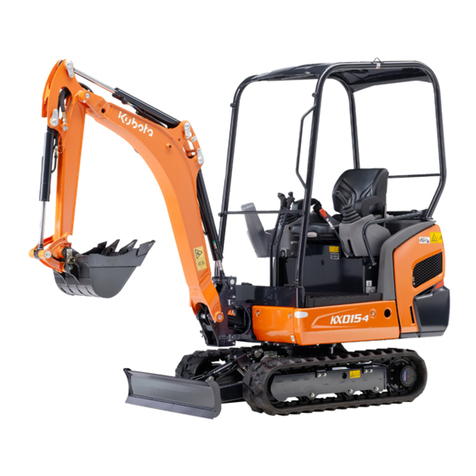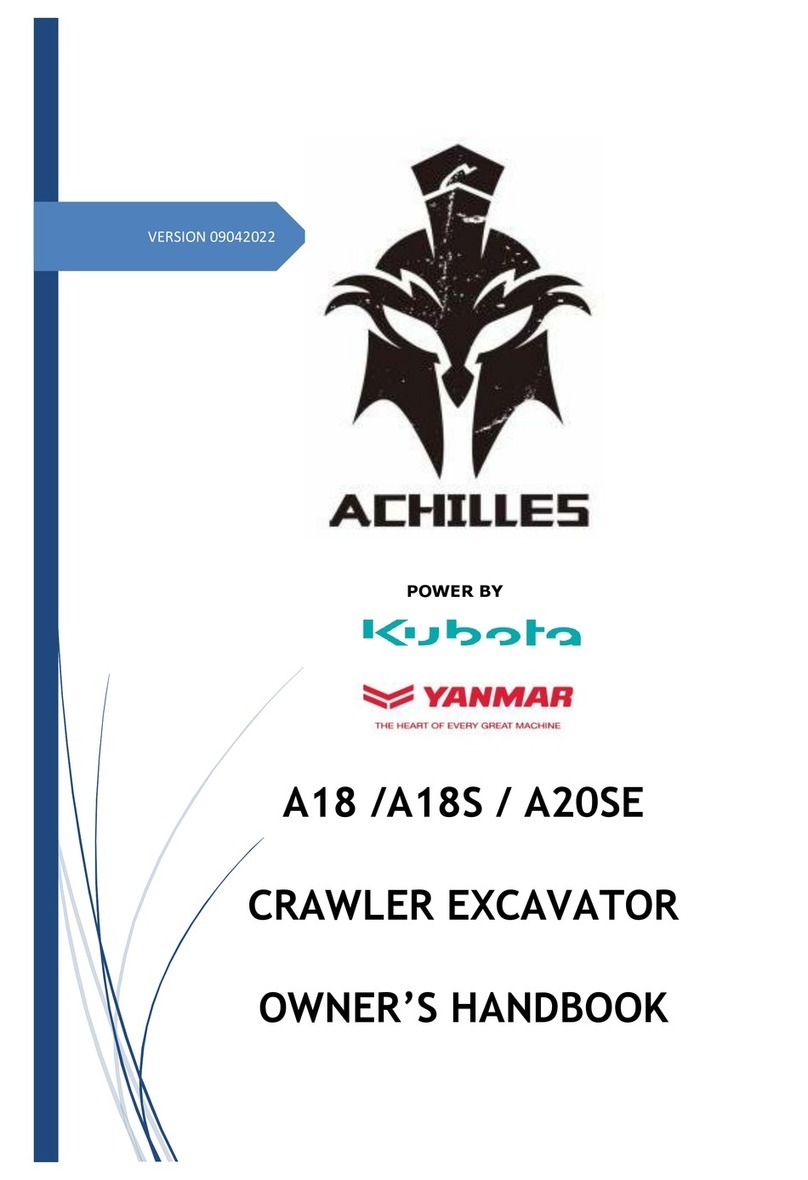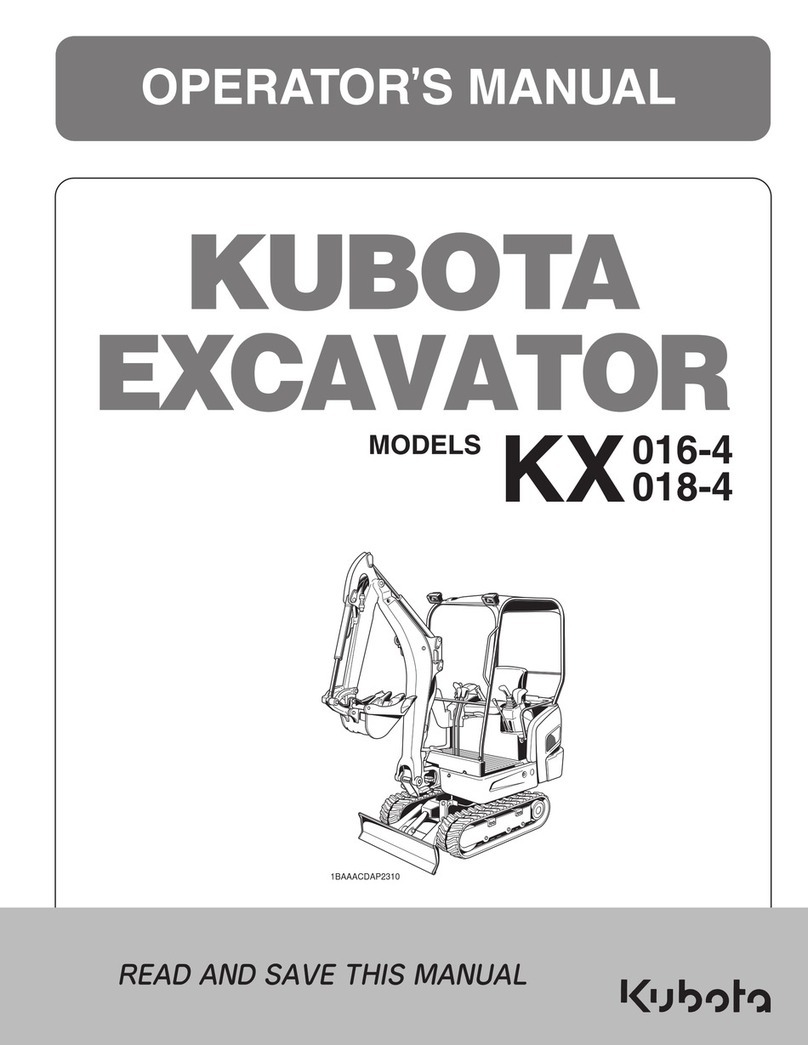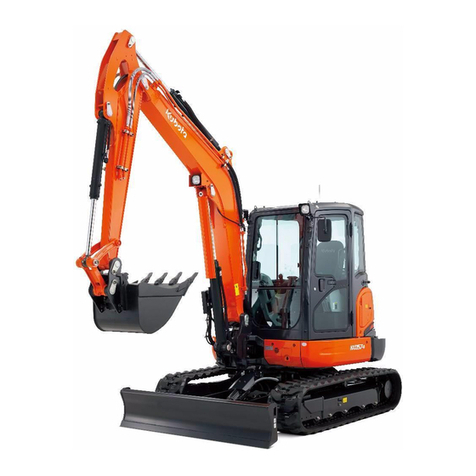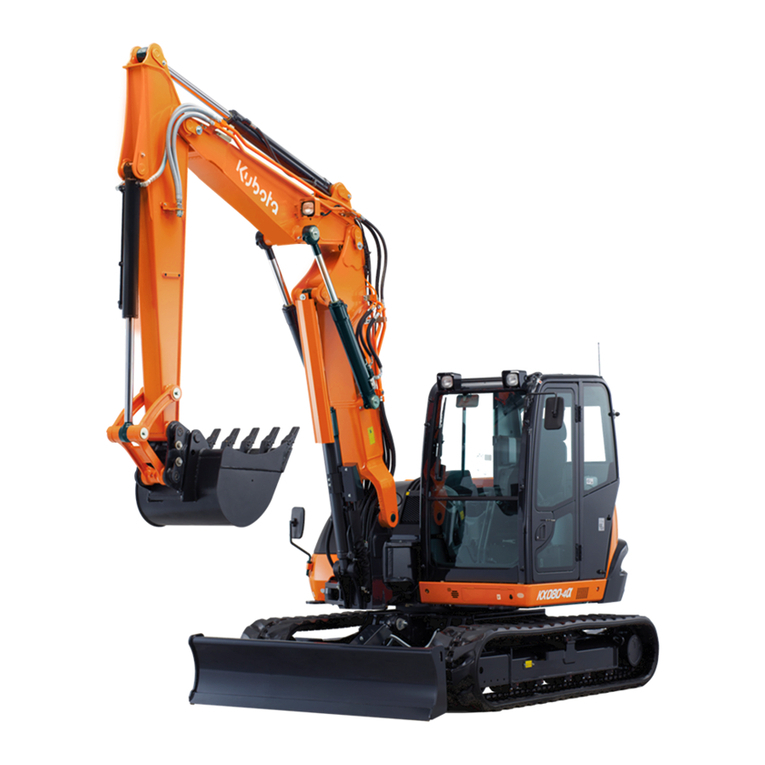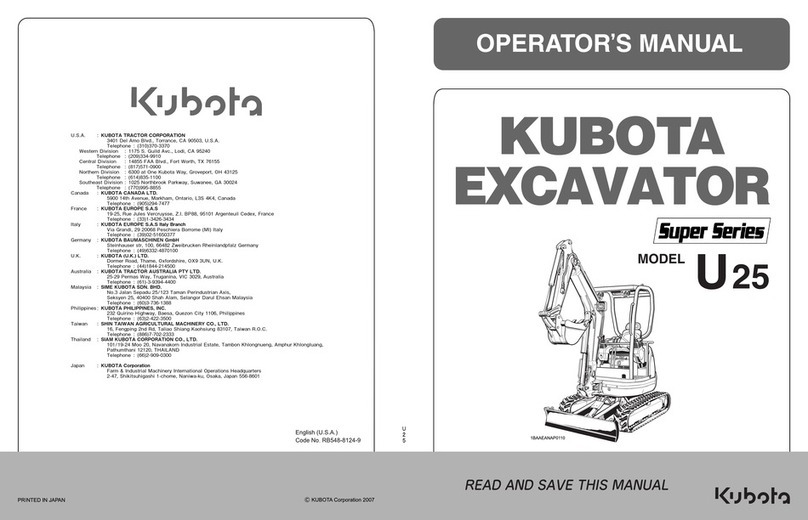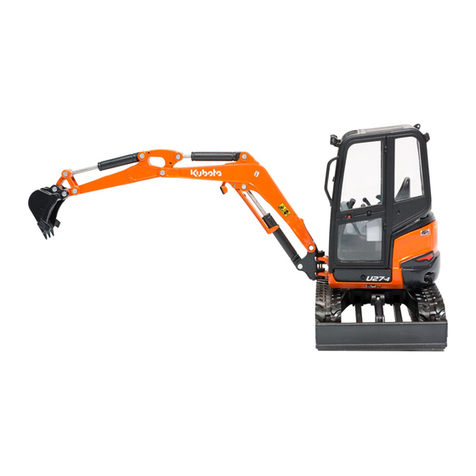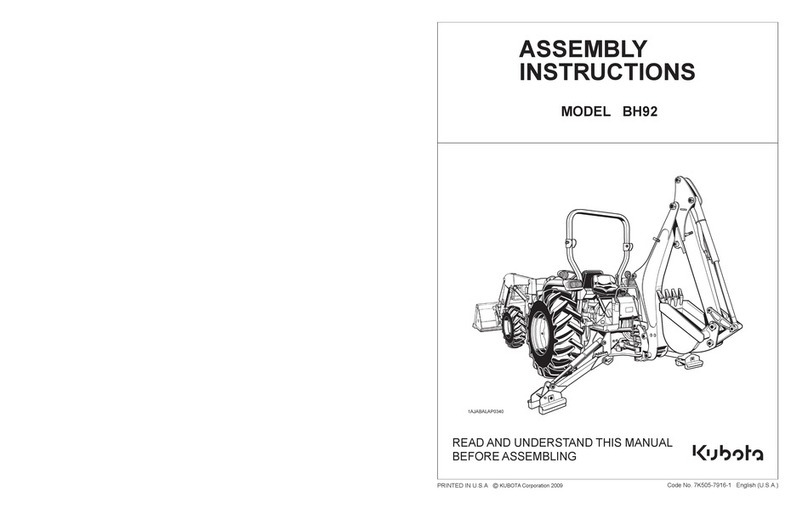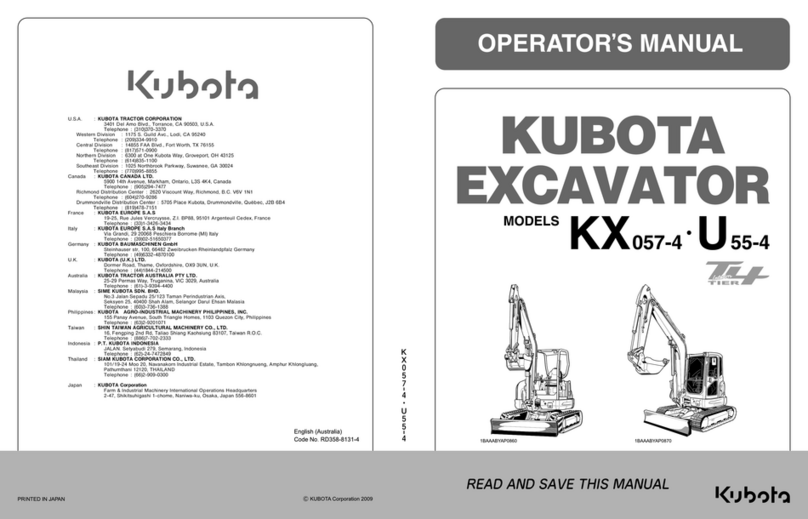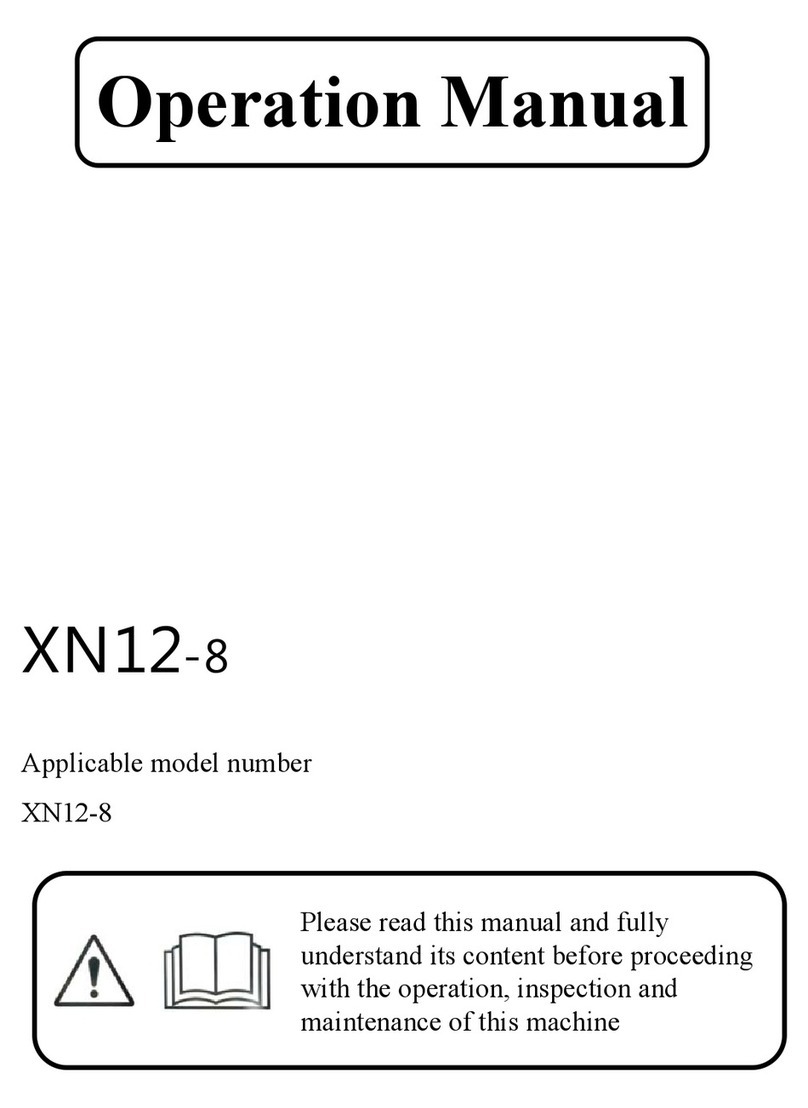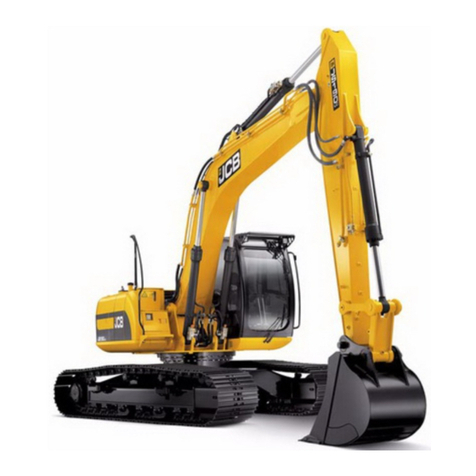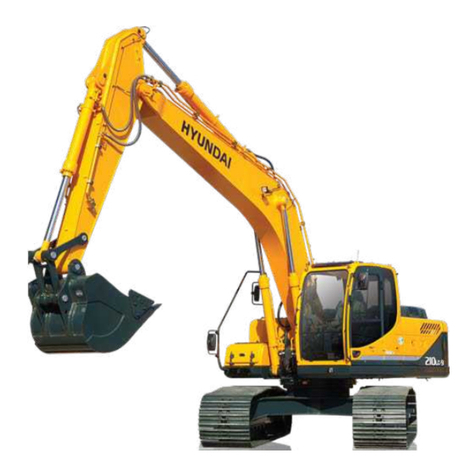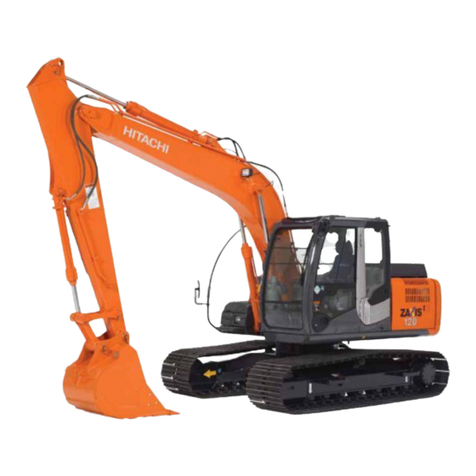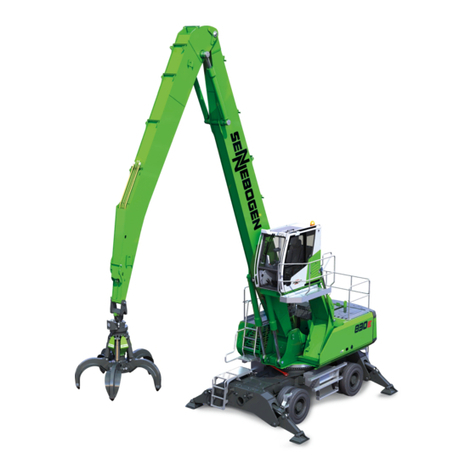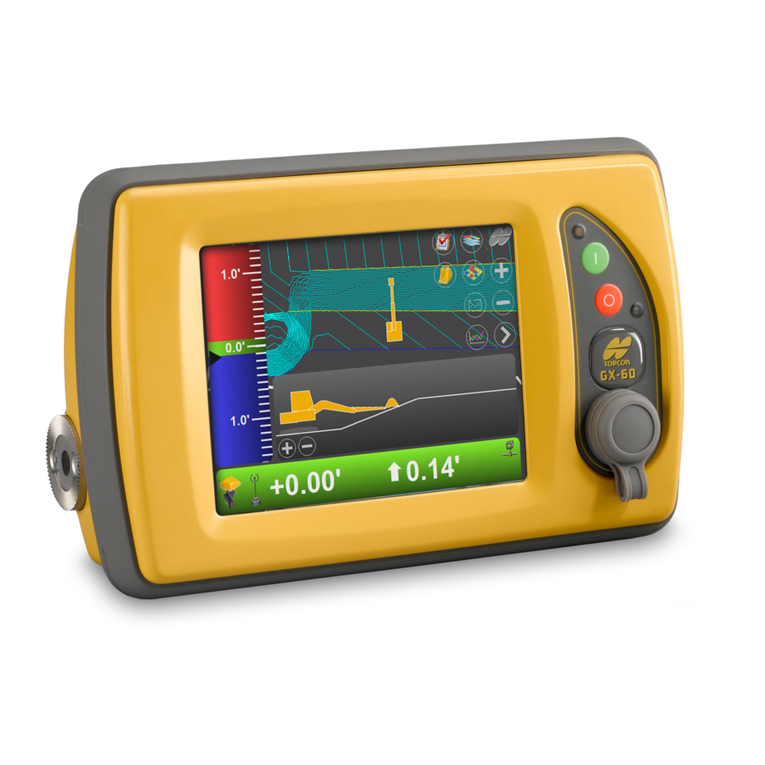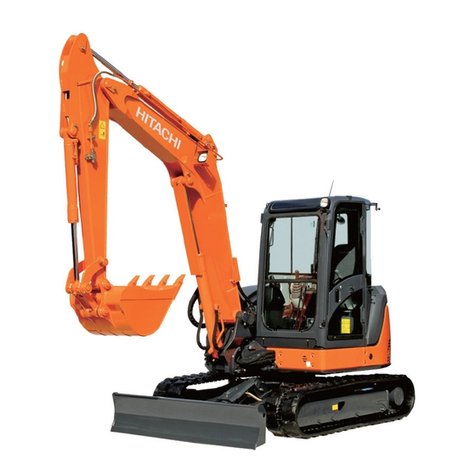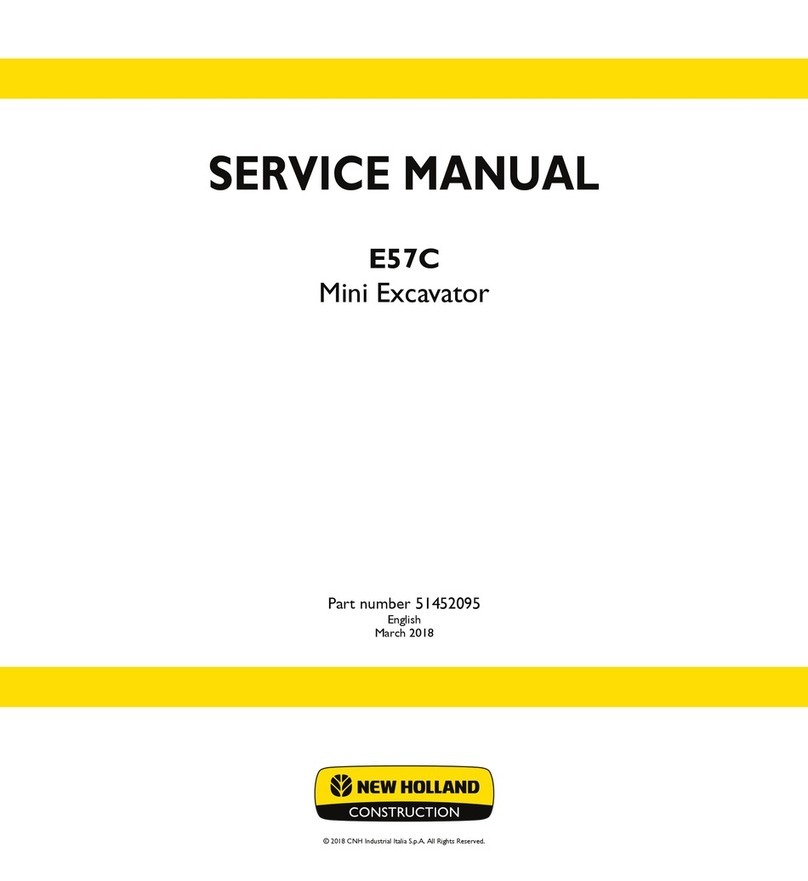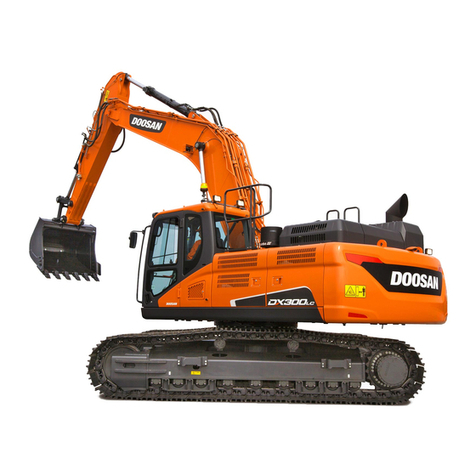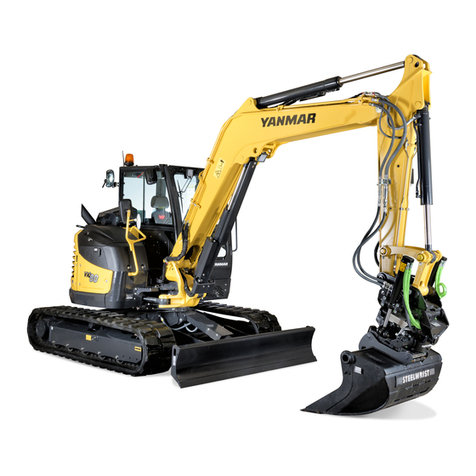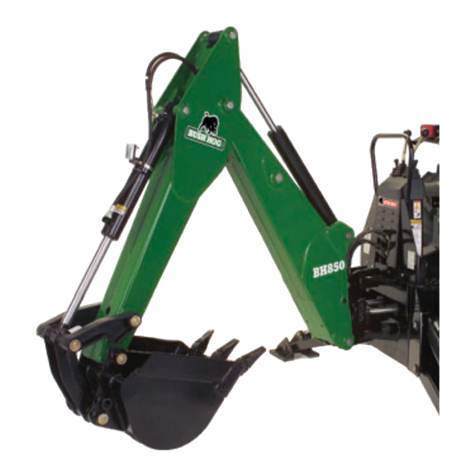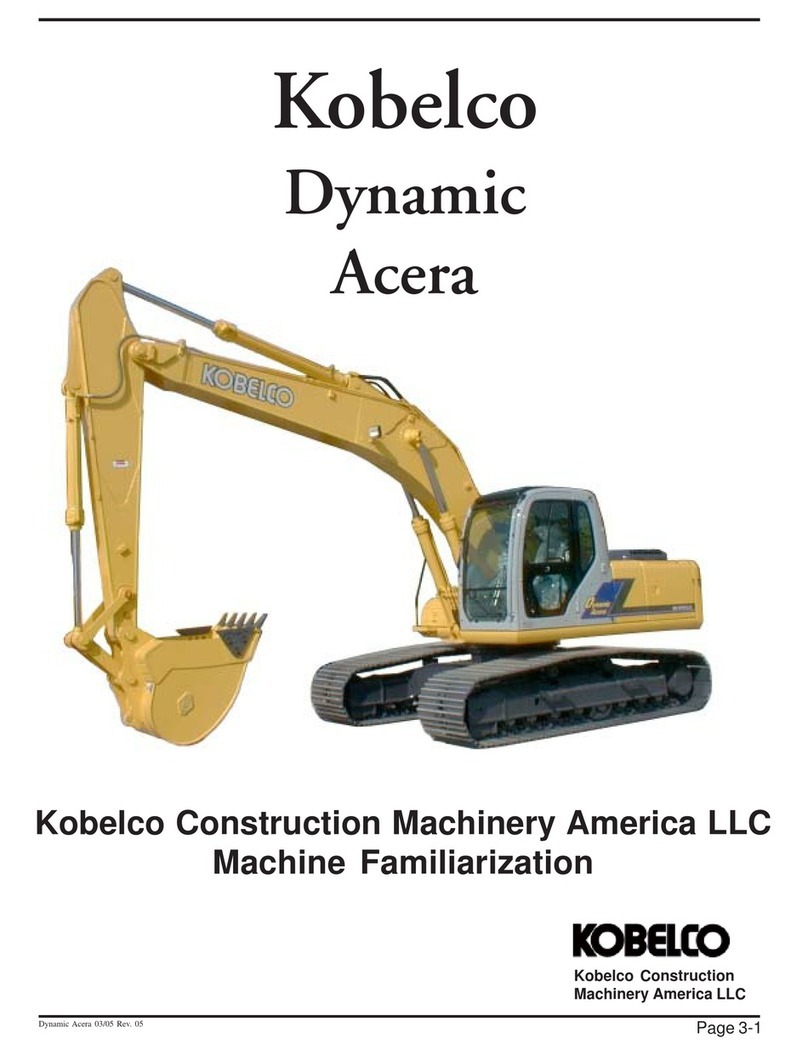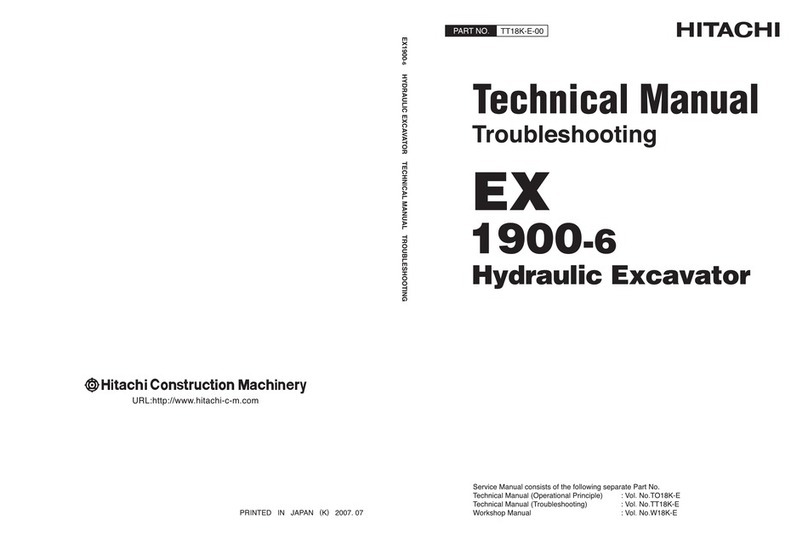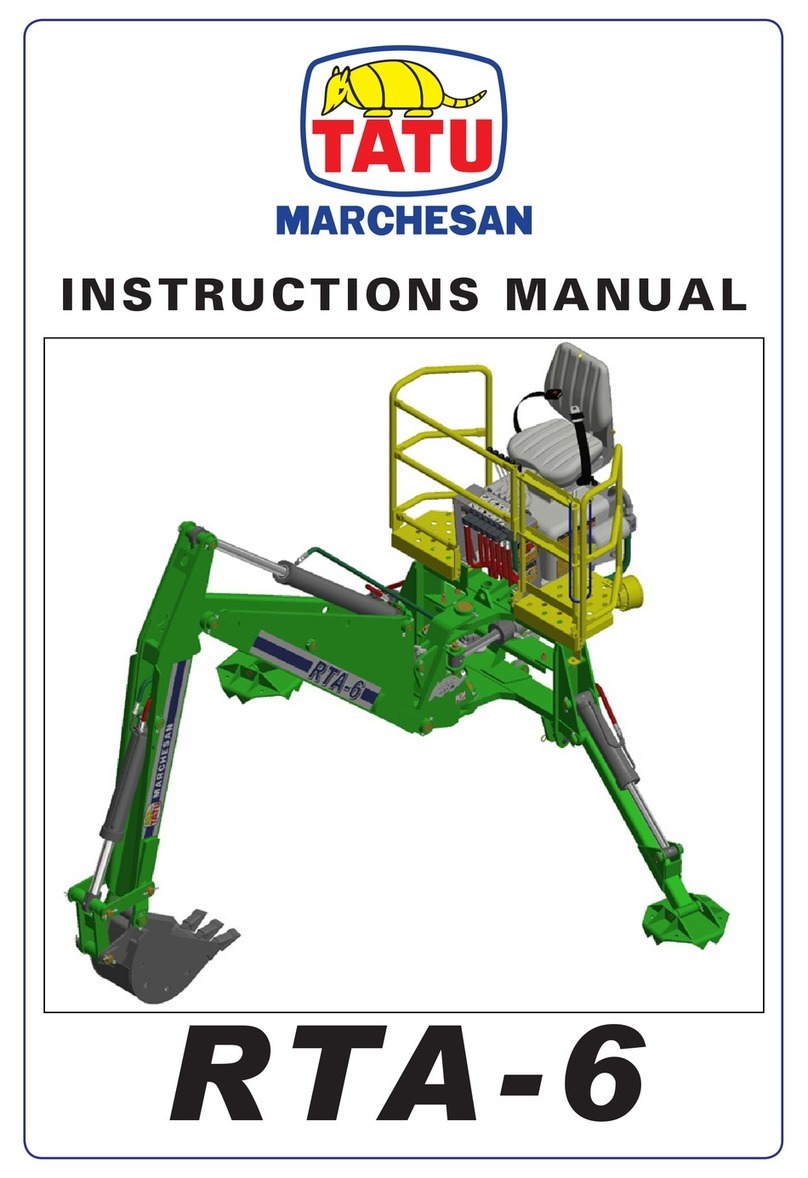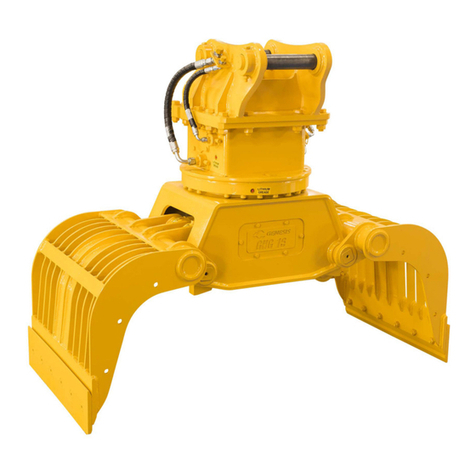
– While using the machine, do not allow any
persons within the working range.
– Check local regulations and contact Before You
Dig Australia (http://byda.com.au).
• Do not allow other persons to use the machine
before having informed them on the exact operation
and work instructions, and make sure that they
have read and fully understood the operator's
manual.
• Do not wear baggy, torn, or oversized clothing
when working with the machine. Clothing can get
caught in rotating parts or control elements,
resulting in accidents or injuries. Wear adequate
safety clothing, such as a safety helmet, safety
shoes, eye protection, ear protection, working
gloves, and so on, as necessary and as prescribed
by law or other standards or regulations.
(1) Helmet
(2) Clothing fit for work
(3) Tight seams
(4) Good grip footwear
(5) Well-fitting cuffs
(6) Working gloves
(7) Soft hat
(8) Towel
(9) Baggy trousers
(10) Loose cuffs of the shirt
(11) Baggy shirt
(12) Sandals or open-toed shoes
• Do not allow passengers to ride on any part of the
machine at any time. The operator must remain in
the machine seat during operation.
• Check mechanical parts for wear, and make sure
that they are correctly adjusted. Replace worn or
damaged parts immediately. Check nuts and bolts
regularly to make sure that they are tightened to the
correct torque.
• Keep your machine clean. Heavy soiling, grease,
dust and grass can cause fires, accidents or
injuries.
• Use only Kubota's authorized attachments.
• Before starting the machine, be absolutely sure that
the machine has been filled with fuel, lubricated,
greased, and undergone all necessary
maintenance.
• Do not modify the machine, otherwise it could lead
to unforeseen safety problems.
2. ROPS
• For your safety, a roll-over protective structure
(ROPS) with a seat belt is installed.
• Always use the seat belt when the machine is
equipped with a ROPS as this combination will
reduce the risk of serious injury or death in case of
machine tip-over or instability.
• Do not modify any structural members of the ROPS
by welding, drilling, bending, grinding or cutting, as
this may weaken the structure.
• If any component is damaged, replace it. Do not
attempt repairs.
• If the ROPS is loosened or removed for any reason,
make sure all parts are reinstalled correctly. Tighten
the mounting bolts to the proper torque.
• The ROPS meets the requirements of ISO 3471.
OPERATING THE EXCAVATOR
1. Starting to operate the machine
• Get into and out of the machine safely. Always face
the machine. Always use handrails and available
steps and keep yourself well balanced. Do not hold
any of the control levers or switches. Do not jump
on or off the machine, whether stationary or in
motion.
• Start and control the machine only from the
operator's seat. The driver should not lean out of
their seat when the engine is running.
• Before starting the engine, make sure that lock
levers are in the LOCK position, all control levers
and pedals are in their “NEUTRAL” positions, and
the seat belt is fastened correctly.
Before starting the engine, make sure that the
control levers, travel lever, pedals, and other control
elements are not stuck and can be moved
smoothly.
If stuck, for example, a lever may fail to return,
possibly putting the user in danger.
If anything wrong is found, immediately pinpoint the
cause and correct it.
• Do not start the engine by jumping the starter
connections.
